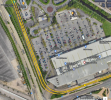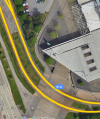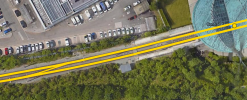MetrolinkInsYT
Member
Something I have noticed on the Metrolink with terminating tram services particularly at Etihad Campus is that they seem to travel further than they need to.
If a tram needs to turn around at Etihad Campus (outbound to inbound), then it has to pass the sidings and travel all the way to the next stop over at Velopark, then turn around and travel through the sidings to get back to Etihad Campus.
I saw this at the sidings on Warren Bruce Road on the Trafford Park Line as well, though they aren't used in regular service.
This is a problem for trams travelling in both directions.
I have two questions regarding this:
Picture below is of the sidings near Velopark. The tracks are highlighted. Velopark stop is shown in the bottom right corner.

If a tram needs to turn around at Etihad Campus (outbound to inbound), then it has to pass the sidings and travel all the way to the next stop over at Velopark, then turn around and travel through the sidings to get back to Etihad Campus.
I saw this at the sidings on Warren Bruce Road on the Trafford Park Line as well, though they aren't used in regular service.
This is a problem for trams travelling in both directions.
I have two questions regarding this:
- Why couldn't the sidings have been arranged differently, like at Piccadilly or Timperley, so that trams can travel straight in and out, and
- why can't services to Etihad Campus terminate at Velopark instead if the trams already have to go that far?
Picture below is of the sidings near Velopark. The tracks are highlighted. Velopark stop is shown in the bottom right corner.



